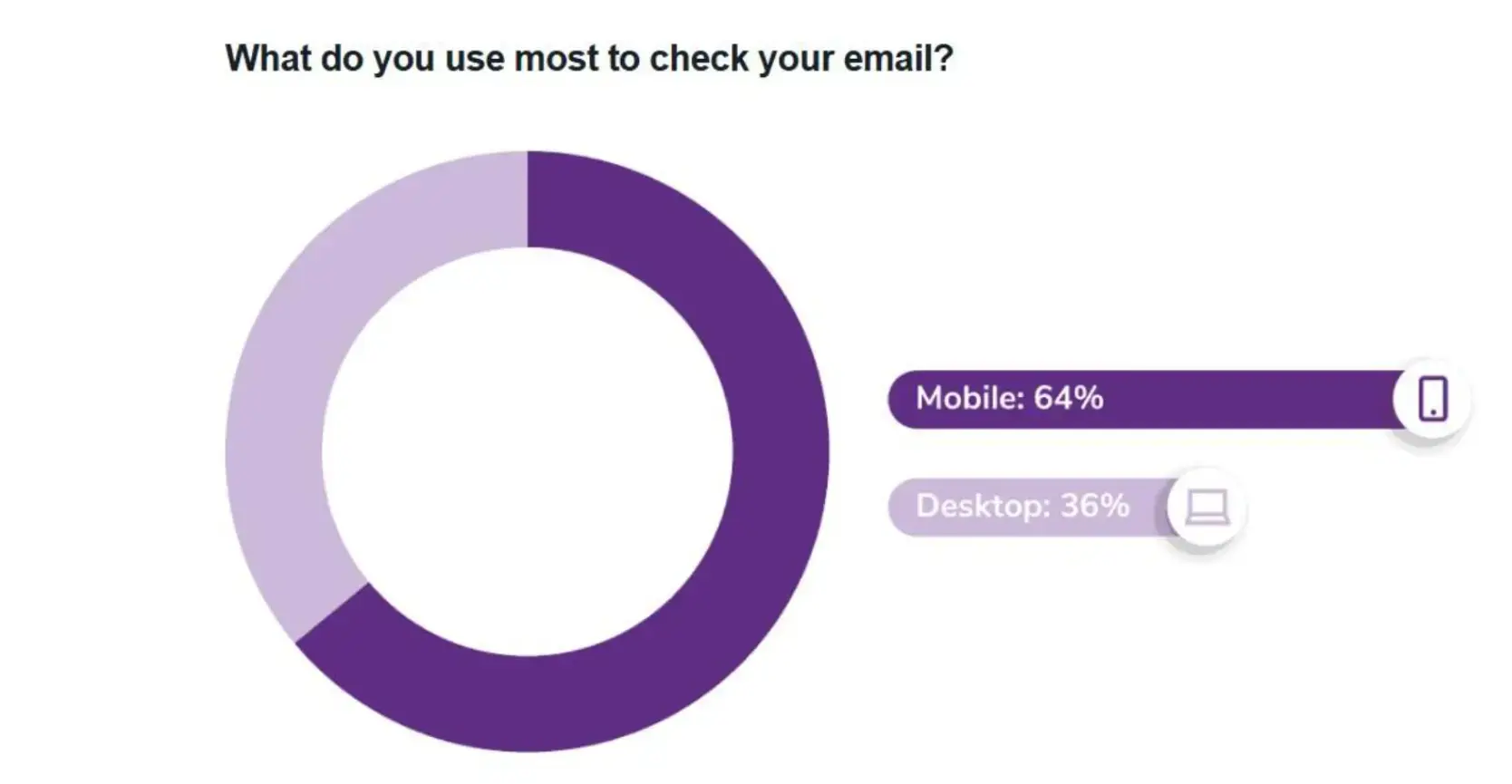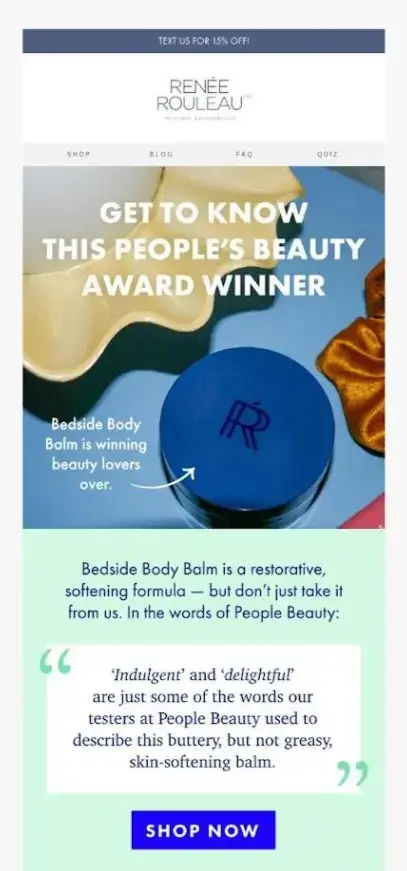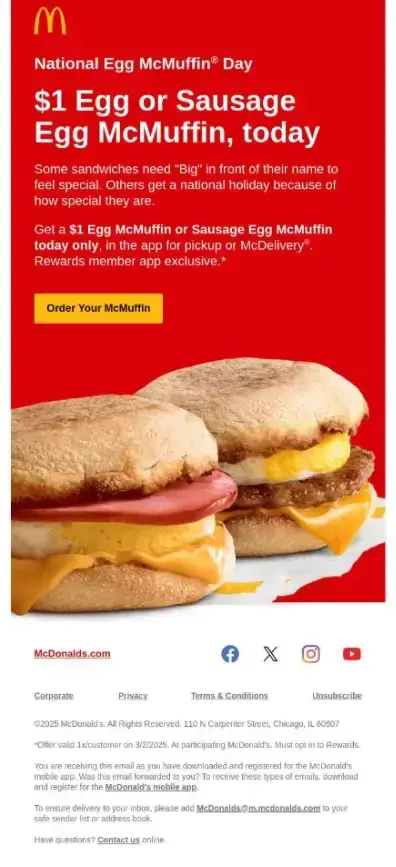It’s easy to think email might’ve faded out by now. But, with the number of global email users projected to reach 4.89 billion by 2027, it's still one of the most effective ways to build customer relationships, drive engagement, and increase sales.
However, just sending emails may not be enough. If you want people to open your emails, click on your link, or download your digital asset, you need a strategy built on proven email marketing best practices.
In this guide, I’ll share nine email marketing best practices that I’ve used to turn underperforming campaigns into high-converting success stories.
1. Segment Your Email List
The biggest mistake I see marketers make is sending the same email to their entire list. It comes across as impersonal and spammy. That’s why segmentation is one of the most effective email marketing best practices for better engagement.
I like to segment based on demographics, past purchases, pages visited, and engagement. For example, a customer who has purchased recently should receive a different email from someone who hasn’t opened your emails in a few months.
A good example of email segmentation is Duolingo, a language-learning app. It emails users who haven’t opened the app in a while, saying, “We miss you.”
Segmentation makes your message more personal, leading to higher open and click-through rates.

Source: Really Good Emails
2. Craft Attention-Grabbing Subject Lines
Writing a strong subject line is one of the most important email marketing best practices. You need to give your recipients a good reason to open your email.
Your subject lines should spark curiosity and promise value in under 50 characters (7-10 words). Anything longer might get cut off, especially on mobile.
For example, this subject line from Branch says, “Find your perfect fit.” It hints at the possibility of finding something satisfying, which makes you wonder, What’s my perfect fit?

Source: Really Good Emails
3. Personalize the Entire Email Experience
Email personalization is more than starting with “Hi [First Name].” It extends to user behavior, preferences, location, and sending time.
For example, using product feedback software and location data, you can send weather-based product recommendations to your subscribers.
This level of personalization helps you connect with your audience and creates a more engaging, tailored experience.
4. Optimize Content for Mobile
A survey found that 64% of respondents prefer opening emails on mobile devices. So, if your emails aren’t easy to read on a phone, you might be losing clicks.

Source: Zero Bounce
That’s why mobile optimization is one of my non-negotiable email marketing best practices. Here’s what I always do:
- Use a single-column layout
- Keep font sizes large (14–16px)
- Ensure buttons are easy to tap
- Optimize image file size for fast loading
5. Use Social Proof to Build Trust
Including social proof in your emails is one of the most underrated email marketing best practices.
Customer reviews, testimonials, or user-generated content can increase your click-through rates.

Source: Really Good Emails
6. Deliver Consistent Value in Every Email
Think of every email as a chance to earn your reader’s attention. Value should be at the core of your message.
Your email should solve a problem for your target audience or share a helpful tip. It’s one of the most effective email marketing best practices that builds trust in the long run.
When people trust your brand, they’re far more likely to take action. The reader should feel like opening your email was worth their time.
7. Include a Clear, Compelling CTA
Every email you send should have a single goal, and your call to action (CTA) should guide the reader toward it. Focus on one strong CTA that’s actionable and visible.
In this McDonald’s email, the CTA color contrasts with the email body, making it more visible.

Source: Really Good Emails
8. Re-Engage Inactive Subscribers
While most businesses have an email opt-in form on their websites, B2B companies may extract emails from LinkedIn or other sources to acquire more leads.
Before launching any campaign, it’s important to run your list through email validation and email verification software, like ZeroBounce's email verifier, to ensure emails reach active and correct inboxes.
This not only reduces bounce rates and protects your sender reputation but also sets the foundation for further cleaning and optimization of your list.
9. Test and Analyze What Works
If you’re not testing, you’re guessing. One of the advanced email marketing best practices I live by is constant experimentation.
Tools like POWR make this process easier by integrating with data-driven email marketing platforms like Mailchimp and Klaviyo.
Final Thoughts
Improving your email open and click-through rates isn’t about luck but strategy. I’ve shown you nine email marketing best practices that helped me over the years.
If you do it right, you’ll see better engagement, higher conversions, and a stronger ROI. Which tip will you try first?

Author Bio
Gaurav Sharma is the founder and CEO of Attrock, a results-driven digital marketing company. He also contributes to top publications like HuffPost, Adweek, and more. Social Accounts: Twitter, LinkedIn, Pinterest, Instagram, YouTube, Facebook.


